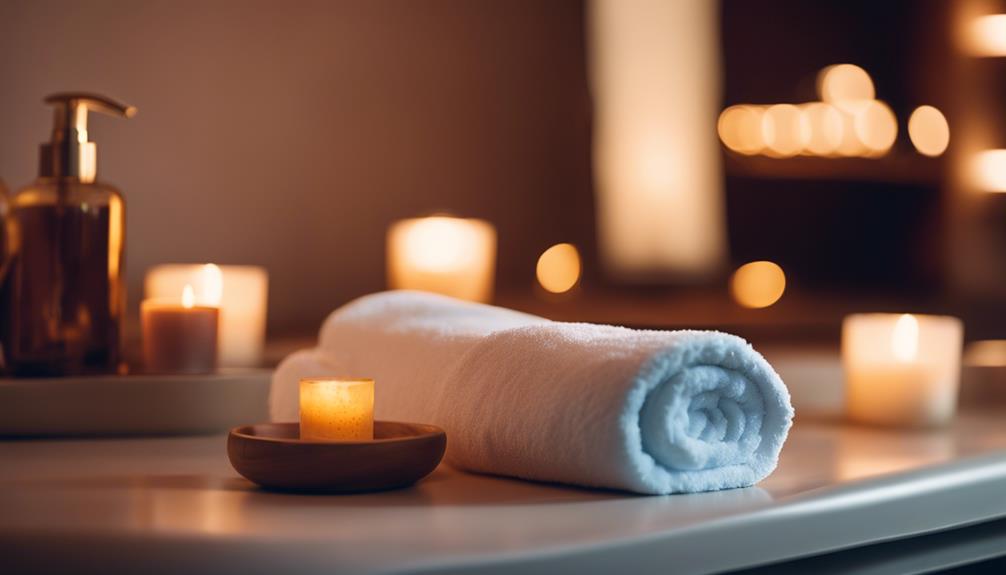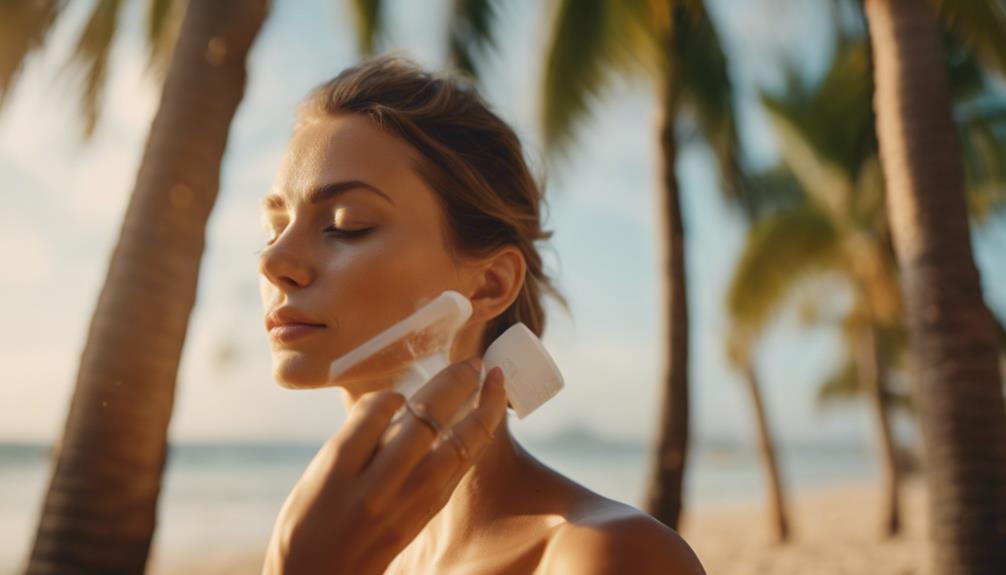Wanna glow without turning into a lobster? First up, know your skin type! Fair skin should start with just 3-5 minutes, while medium can go for 5-7. Dark skin? You can kick it off with 7-10 minutes. Always wear protective eyewear and hydrate like you just ran a marathon! Grab a good bronzer that matches your tone, and don't forget SPF. Keep an eye on how your skin feels—no one wants to become a sizzling hot mess. Trust me, with a little care, you can totally rock that tan! And hey, there's more to discover about tanning safely!
Key Takeaways
- Assess your skin type to determine the appropriate tanning duration and minimize the risk of burns.
- Start with short tanning sessions, gradually increasing time based on your skin's reaction to UV exposure.
- Choose a bronzer that complements your skin tone and includes SPF for hydration and protection.
- Always wear protective eyewear to shield your eyes from harmful UV rays during tanning sessions.
Assess Your Skin Type
To get the most out of your tanning experience, you need to assess your skin type and understand how it reacts to UV exposure.
Have you ever noticed how some friends tan like golden gods while others turn into lobsters? That's all about skin type!
If you've got fair skin, you'll need to tread lightly since you're more likely to burn. Medium skin? You've got a bit more wiggle room! And if you're rocking dark skin, you can soak up the rays a little longer.
Just remember, it's super important to listen to your skin. If it starts to feel hot or itchy, it's your cue to cool it!
Determine Safe Tanning Duration

Knowing your skin type helps you determine the safe tanning duration for each session. For example, if you're fair-skinned, you'll want to be extra cautious. Check out the table below for some quick guidelines:
| Skin Type | Initial Time | Max Time |
|---|---|---|
| Fair | 3-5 mins | 10 mins |
| Medium | 5-7 mins | 15 mins |
| Dark | 7-10 mins | 20 mins |
Starting slow is key, so don't just jump in for those maximum times! Gradually increasing your tanning duration helps prevent burns, and let's be real—nobody wants to look like a lobster. Keep an eye on how your skin reacts, and always have fun while staying safe!
Select the Right Bronzer
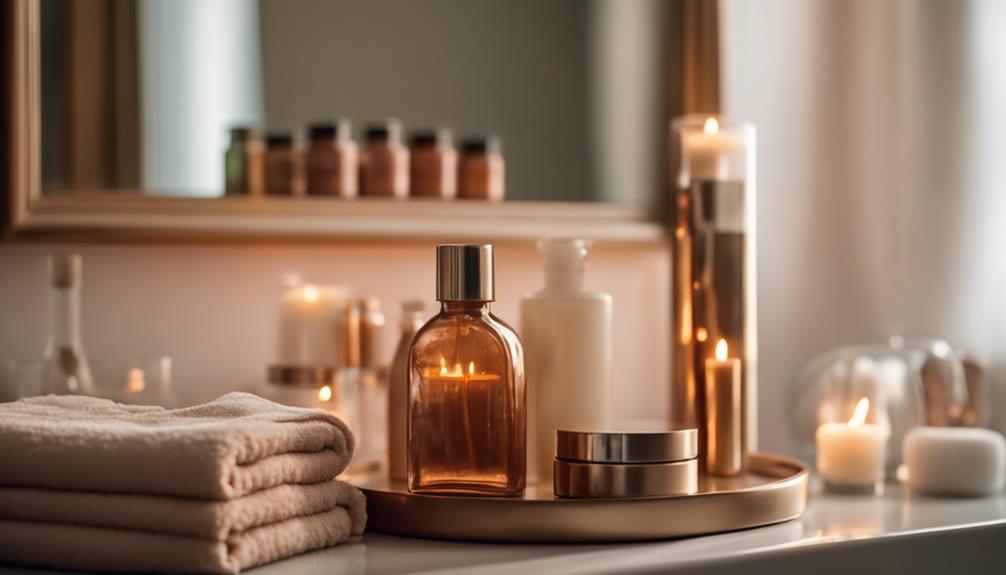
Selecting the right bronzer is essential for achieving a natural-looking tan while keeping your skin hydrated and protected. You don't want to end up looking like a lobster or a streaky mess, right?
So, start by picking a bronzer that matches your skin tone, because nobody wants to look like an orange! Look for hydrating lotions too; dry skin is a no-go. Bonus points if your bronzer has SPF—your future self will thank you!
When applying, make sure it goes on evenly, or you might end up with those awkward patchy spots. Remember, a good bronzer not only enhances your glow but also makes your tanning experience way more enjoyable. Who doesn't want to feel fabulous while tanning?
Use Protective Measures
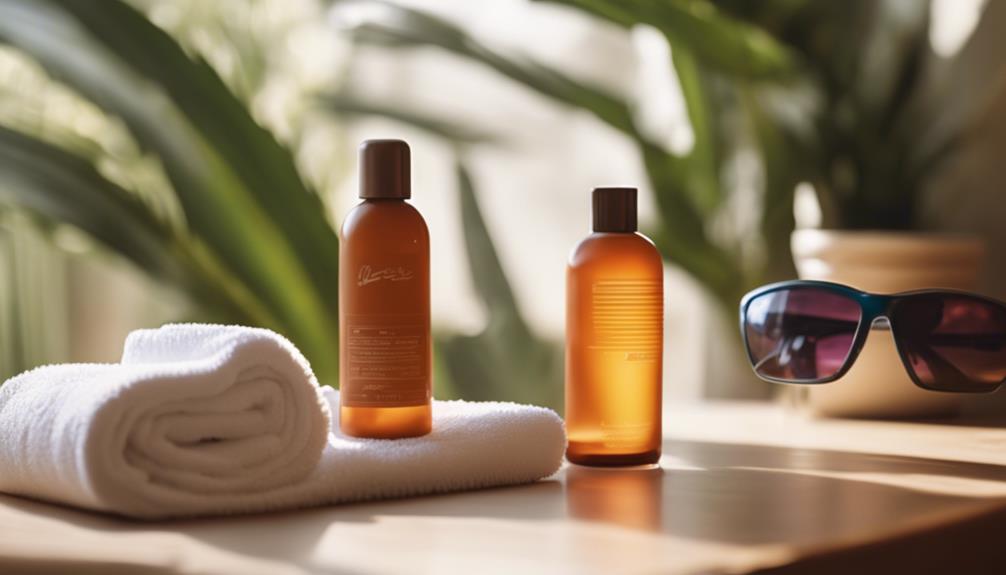
Using protective measures during tanning sessions is essential to guarantee your skin stays healthy and safe from potential damage.
First off, don't forget to wear protective eyewear! Your eyes deserve love too, right?
You should also use a quality bronzer lotion with SPF. It'll keep your skin hydrated while shielding you from those sneaky UV rays.
And hey, drink plenty of water before and after your session—hydration is key! You wouldn't want to end up feeling like a raisin, would you?
Finally, always listen to your skin. If it starts feeling hot or irritated, it's time to wrap things up.
Monitor and Adjust Sessions
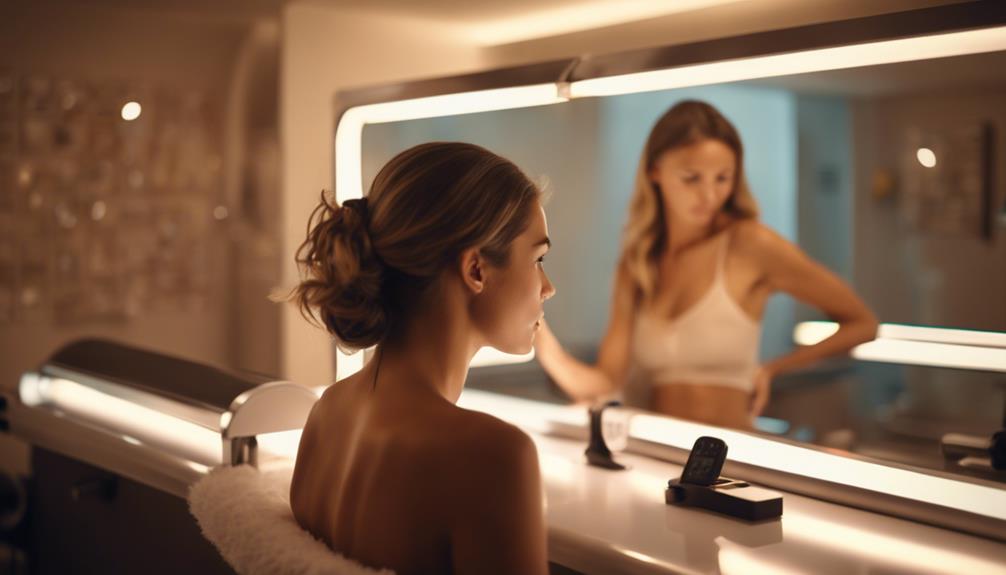
It's important to keep an eye on your skin's response during tanning sessions and adjust the duration as needed. You don't want to look like a lobster, right? Monitoring your skin can help you avoid burns and achieve that sun-kissed glow safely!
Here are a few tips to keep in mind:
- Start with shorter sessions and gradually increase the time based on how your skin reacts.
- Pay attention to any redness or irritation and adjust your tanning time accordingly.
Frequently Asked Questions
Can I Tan if I Have Existing Skin Conditions?
If you have existing skin conditions, it's best to consult a dermatologist before tanning. They'll help you understand risks and provide guidance on safe practices tailored to your specific skin needs and concerns.
How Often Should I Use a Tanning Bed?
Tanning time tips: You should use a tanning bed once or twice a week, letting your skin recover between sessions. Always assess your skin's response, and adjust frequency to avoid damage and promote a healthy glow.
Is Indoor Tanning Safer Than Outdoor Tanning?
Indoor tanning can be safer than outdoor tanning since you control exposure time and intensity. However, both methods carry risks. Always prioritize skin health, use protective measures, and consult a dermatologist for personalized advice.
What Are the Signs of Overexposure to UV Light?
If you notice redness, peeling skin, or blistering after UV exposure, you're likely experiencing overexposure. You might also feel discomfort or excessive itchiness. Pay attention to these signs to protect your skin from damage.
Can I Use Regular Sunscreen in a Tanning Bed?
Using regular sunscreen in a tanning bed is like wearing a raincoat in the desert; it may block some UV rays but won't provide the bronzing benefits you're seeking. Instead, opt for a specialized tanning lotion.
Conclusion
So, you're all set to glow like a pro, right?
Just remember, it's not just about looking good; it's about being smart, too! Keep an eye on your time, choose the right products, and stay safe.
The last thing you want is to end up looking like a lobster instead of a bronzed goddess.
So, are you ready to rock that sun-kissed look?
With a little care and the right techniques, you'll shine brighter than ever!

